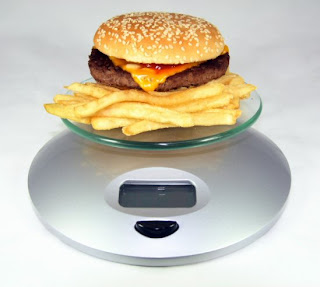Reason #1: Menstruation
One of the main reasons that female teenagers need to watch the amount of iron they eat, is because of menstruation. It is very important that female teens make sure they are eating iron rich foods. The reason they need to eat lots of iron rich foods is because they need the extra iron to make up for the iron lost during periods. If female teens don't get enough iron, they may become tired or possibly even faint. Iron helps blood bring oxygen to the muscles. When female teens menstruate, they lose iron along with the blood loss. Without enough iron, red blood cells cannot bring the needed oxygen to working muscles and the brain, resulting in fatigue.
Even if you are a male teenager, iron is still very important, because iron helps blood carry oxygen to muscles and the brain.

Reason #2: Healthy bones
The next major reason that eating healthy is so important for teens is because good nutrition can prevent a bone disease called osteoporosis. The body is constantly working on breaking down and rebuilding the bones. Specialized bone cells called osteoblasts take calcium magnesium and phosphorus from the blood stream and use them to build bone mass. At about 30 years old, even when someone who has a healthy diet and exercises regularly, the body will begin to loose more bone than it can rebuild. Usually there are not any symptoms of osteoporosis until a fracture in the bone occurs, or there is a vertebrae collapse. This makes
osteoporosis hard to detect, until damage is already done. Osteoporosis affects more than 20 million people in the U.S. and is the cause of 1.5 million bone fractures each year.
Osteoporosis is around four times more common in women than men. The good news about osteoporosis is that it is completely preventable, and even if you get it, it is also curable with the right nutrition and exercise.

Reason #3: Energy
The next very important reason is energy. The average teenager gets many opportunities daily for physical activity. It is essential that proper amounts of whole grain, leafy green vegetables, beans, chicken, and nuts are consumed to sustain a good energy level. These foods, in proper amounts, can assure that teens have enough energy to get through their day. If teens do not consume enough of these energy-filled foods, the body will resort to burning stored fat, which could be used for emergency situations when the body runs out of fuel.

Reason #4: Muscle development
Another strong reason that it is vital for teens to eat healthy is to promote healthy muscle growth, also known as hypertrophy. Healthy foods which contain protein help teenagers to grow and maintain healthy muscle mass. Some examples of protein-rich foods include lean red meats, fish, chicken, soy beans, and nuts.
For vegetarians, some of these foods are not an option, so it is essential for them to eat combinations of foods, like beans and rice. This is important because the foods each contain different essential amino acids, and when combined in a meal, are just as protein-rich as lean red meat.

Reason #5: Maintaining a Healthy Weight
The last reason, and possibly the most important reason that teens should eat healthy, is to maintain a healthy weight. In our society today it is becoming easier to resort to our favorite junk foods. And junk foods often times contain too much fats and too much sugar, which will be converted into fat. Obesity is not the only factor that teens have to worry about when they eat unhealthy foods too often. Diabetes is caused by eating unhealthy foods and not exercising as much as need. A healthy diet, and watching caloric intake, can greatly help tenns keep a healthy weight and prevent diabetes















